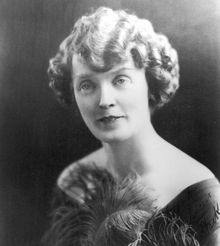Notes
| Wikisource has original text related to this article: |
- ↑ Greene, Douglas G. Classic Mystery Stories. Mineola, New York: Dover Publications, 1999.
| "The Leopard Man's Story" | |
|---|---|
| Author | Jack London |
| Country | United States |
| Language | English |
| Genre(s) | Short story |
| Publication type | Magazine |
| Publisher | Leslie's Weekly |
| Publication date | 1903 |
"The Leopard Man's Story" is a short mystery story by Jack London. It was first published in the August 1903 issue of Leslie's Weekly and, in 1906, included in Moon-Face and Other Stories. [1]
The "Leopard Man", a saddened leopard trainer who bore visible scars on his arms and whose personality diametrically opposed his daring profession, tells a tale of a "lion-tamer who was hated by another man" to the narrator. The unnamed man, who hated the lion-tamer, attended every performance in hopes of watching the lion crunch down on his tamer during his "big play", sticking his head in the lion's mouth. Finally, one day he witnessed it.
After pointing out the patience of such a task, the Leopard Man jumped to a story about De Ville, a small "sword-swallowing and juggling Frenchman" known for his quick temper. De Ville struck fear in all but one, 'King' Wallace, a lion-tamer known for sticking his head in the lion's mouth. One day, De Ville caught Wallace looking at Madame de Ville, his wife. Despite warnings about De Ville's temperament, Wallace, while feeling belligerent one day, pushed De Ville's head into a paste bucket. Calm, De Ville cleaned himself off and nothing transpired between the two for several months.
At a San Francisco show, the Leopard Man, looking for his pocket-knife, oversaw Wallace and the rest of the tent occupiers, except for De Ville who glared with hatred at Wallace, watching a quarrel between some trapeze artists. Still watching the events, the Leopard Man noticed De Ville, with his handkerchief drawn, walk past Wallace and feign wiping sweat off his face.
During his performance, Wallace cracked his whip and put his head inside the mouth of Augustus, his preferred lion. With Wallace's head in his mouth, Augustus' jaws clamped together. After the event, the Leopard Man went over to smell Wallace's head and sneezed. De Ville had placed snuff in his hair; Augustus had sneezed.
| Wikisource has original text related to this article: |

A sneeze, or sternutation, is a semi-autonomous, convulsive expulsion of air from the lungs through the nose and mouth, usually caused by foreign particles irritating the nasal mucosa. A sneeze expels air forcibly from the mouth and nose in an explosive, spasmodic involuntary action resulting chiefly from irritation of the nasal mucous membrane. This action allows for mucus to escape through the nasal cavity. Sneezing is possibly linked to sudden exposure to bright light, sudden change (fall) in temperature, breeze of cold air, a particularly full stomach, exposure to allergens, or viral infection. Because sneezes can spread disease through infectious aerosol droplets, it is recommended to cover one's mouth and nose with the forearm, the inside of the elbow, a tissue or a handkerchief while sneezing. In addition to covering the mouth, looking down is also recommended in order to change the direction of the droplets spread and avoid high concentration in the human breathing heights.

The manticore or mantichore is a Persian legendary creature similar to the Egyptian sphinx that proliferated in western European medieval art as well. It has the head of a human, the body of a lion and a tail of venomous spines similar to porcupine quills, while other depictions have it with the tail of a scorpion. There are some accounts that the spines can be shot like arrows, thus making the manticore a lethal predator. It devours its prey whole, using its triple rows of teeth, leaving no traces of its victims behind.

Richard Horatio Edgar Wallace was an English writer.
Scaphism, also known as the boats, or mistakenly as cyphonism, is an alleged ancient Persian method of execution. The word comes from the Greek σκάφη, skáphe, meaning "anything scooped out". It entailed trapping the victim between two boats, feeding and covering them with milk and honey, and allowing them to fester and be devoured by insects and other vermin over time.

Book of Imaginary Beings was written by Jorge Luis Borges with Margarita Guerrero and published in 1957 under the original Spanish title Manual de zoología fantástica. It was expanded in 1967 and 1969 in Spain to the final El libro de los seres imaginarios. The English edition, created in collaboration with translator Norman Thomas di Giovanni, contains descriptions of 120 mythical beasts from folklore and literature.

A Congolese spotted lion, also known by the portmanteau lijagulep, is the hybrid of a male lion and female jaguar-leopard. Several lijaguleps have been bred, but only one appears to have been exhibited as a Congolese spotted lion. It was most likely given that name by a showman because the public were more interested in exotic captured animals than in captive-bred hybrids.

Mabel Stark, whose real name was Mary Ann Haynie, was a renowned tiger trainer of the 1920s. She was referred to as one of the world's first women tiger trainers/tamers. In its belated obituary, The New York Times lauded Stark as "one of the most celebrated animal trainers in a field dominated by men."

Lion taming is the taming and training of lions, either for protection or for use in entertainment, such as the circus. The term often applies to the taming and display of lions and other big cats such as tigers, leopards, jaguars, black panthers, cheetahs, and cougars. People often use lion taming as a metaphor for any dangerous activity. Lion taming occurs in zoos across the world to enable the keepers to carry out medical procedures and feedings.

George Wombwell,, was a famous menagerie exhibitor in Regency and early Victorian Britain. He founded Wombwell's Travelling Menagerie.
Edward Mordrake is the apocryphal subject of an urban legend who was, according to the legend, born in the 19th century as the heir to an English peerage with a face at the back of his head. According to legend, the face could only laugh or cry, with Mordrake begging doctors to remove it, claiming it whispered horrific things to him at night, before committing suicide at the age of 23.

In British folklore, British big cats, also referred to as ABCs, phantom cats and mystery cats, feature in reported sightings of large Felidae in the British countryside. These creatures have been described as "panthers", "pumas" or "black cats".

The lion is a common charge in heraldry. It traditionally symbolises courage, nobility, royalty, strength, stateliness and valour, because historically the lion has been regarded as the "king of beasts". The lion also carries Judeo-Christian symbolism. The Lion of Judah stands in the coat of arms of Jerusalem. Similar-looking lions can be found elsewhere, such as in the coat of arms of the Swedish royal House of Bjelbo, from there in turn derived into the coat of arms of Finland, formerly belonging to Sweden.
The Lion Tamer is a 1934 animated short film produced by the Van Beuren Studios and directed by Vernon Stallings and starring Charles J. Correll and Freeman F. Gosden as the voices of their popular radio characters, Amos 'n' Andy. It was one of two such films made that year, the other being The Rasslin' Match. These two shorts and the 1930 live-action film Check and Double Check constitute the only visual representations of Amos 'n' Andy prior to the advent of network television.

3 Ring Circus is a 1954 American comedy film directed by Joseph Pevney and starring Dean Martin and Jerry Lewis. The picture was shot from February 17 to March 31, 1954, and released on December 25 by Paramount Pictures. The supporting cast includes Joanne Dru, Zsa Zsa Gabor, Wallace Ford, Sig Ruman, Nick Cravat, and Elsa Lanchester.

The inaugural games were held, on the orders of the Roman Emperor Titus, to celebrate the completion in AD 80 of the Colosseum, then known as the Flavian Amphitheatre. Vespasian began construction of the amphitheatre around AD 70 and it was completed by his son Titus who became emperor following Vespasian's death in AD 79. Titus' reign began with months of disasters – including the eruption of Mount Vesuvius, a fire in Rome, and an outbreak of plague – he inaugurated the completion of the structure with lavish games that lasted for more than one hundred days, perhaps in an attempt to appease the Roman public and the gods.
Whodunnit? is a play written by Anthony Shaffer in 1977, originally called The Case of the Oily Levantine.

"Death's Door" is the eighteenth episode of the fifth series of the 1960s cult British spy-fi television series The Avengers, starring Patrick Macnee and Diana Rigg, and guest starring Clifford Evans, Allan Cuthbertson, William Lucas, and Marne Maitland. It was first aired on ABC on 7 October 1967. The episode was directed by Sidney Hayers, and written by Philip Levene.

Isaac A. Van Amburgh (1808–1865) was an American animal trainer who developed the first trained wild animal act in modern times. By introducing jungle acts into the circus, Van Amburgh paved the way for combining menageries with circuses. After that, menageries began using equestrian and clown performances in circus rings. Gradually the distinction between circus and menagerie faded.
Calila e Dimna is an Old Castilian collection of tales from 1251, translated from the Arabic text Kalila wa-Dimna by the order of the future King Alfonso X while he was still a prince. The Arabic text is itself an 8th-century translation by Ibn al-Muqaffa' of a Middle Persian version of the Sanskrit Panchatantra from about 300.

Ellen Chapman later Ellen Sanger appearing as Madame Pauline de Vere was a British circus performer and lion tamer. She was said to be the first woman to put her head in a lion's jaws and a demonstration impressed Queen Victoria.